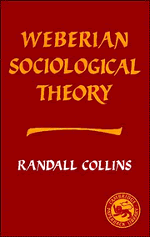Book contents
3 - The Weberian revolution of the High Middle Ages
Published online by Cambridge University Press: 01 June 2011
Summary
The European High Middle Ages, the period between approximately a.d. 1050 and 1450, occupies an anomalous position in most treatments of social change. This is true in the theories of Immanuel Wallerstein and Max Weber, as well as those of Marx and many others. Medieval Europe is taken as representing a structural obstacle to the development of capitalism and modernity, or at least no more than a prelude to it. I intend to argue, on the contrary, that the Middle Ages experienced the key institutional revolution, that the basis of capitalism was laid then rather than later, and that at its heart was the organization of the Catholic Church itself.
Wallerstein (1974:15–38) is interested in the Middle Ages only as a backdrop to the capitalist world economy that followed. He notes that the medieval economy grew from 1150 to 1300, then contracted from about 1300 to 1460, whereupon came the crucial world expansion. His analysis focuses on the contraction and subsequent takeoff, not on the original growth of medieval society itself. To explain the contraction, he gives various reasons: a period of unfavorable climate; a long-term secular trend in which a thousand years of feudal appropriation reached the stage of diminishing returns; a shorter-term economic cycle in which intolerable burdens were placed on the peasantry, leading to revolts and further declines in productivity. None of these in itself seems quite satisfactory, but Wallerstein decides that their conjunction created a crisis of such magnitude that only a major transformation, including overseas expansion, could solve it.
- Type
- Chapter
- Information
- Weberian Sociological Theory , pp. 45 - 76Publisher: Cambridge University PressPrint publication year: 1986
- 2
- Cited by



